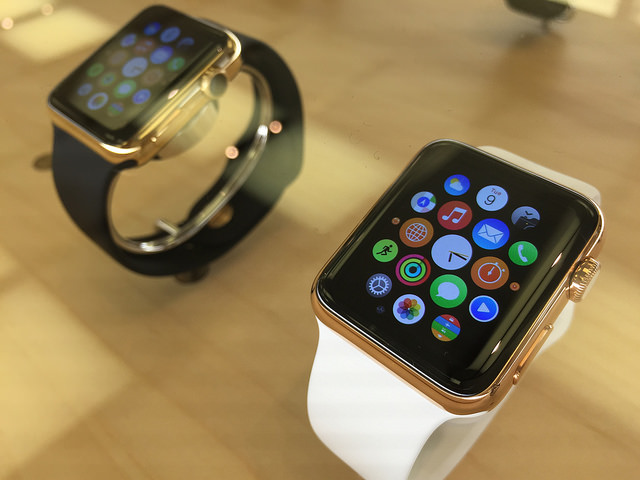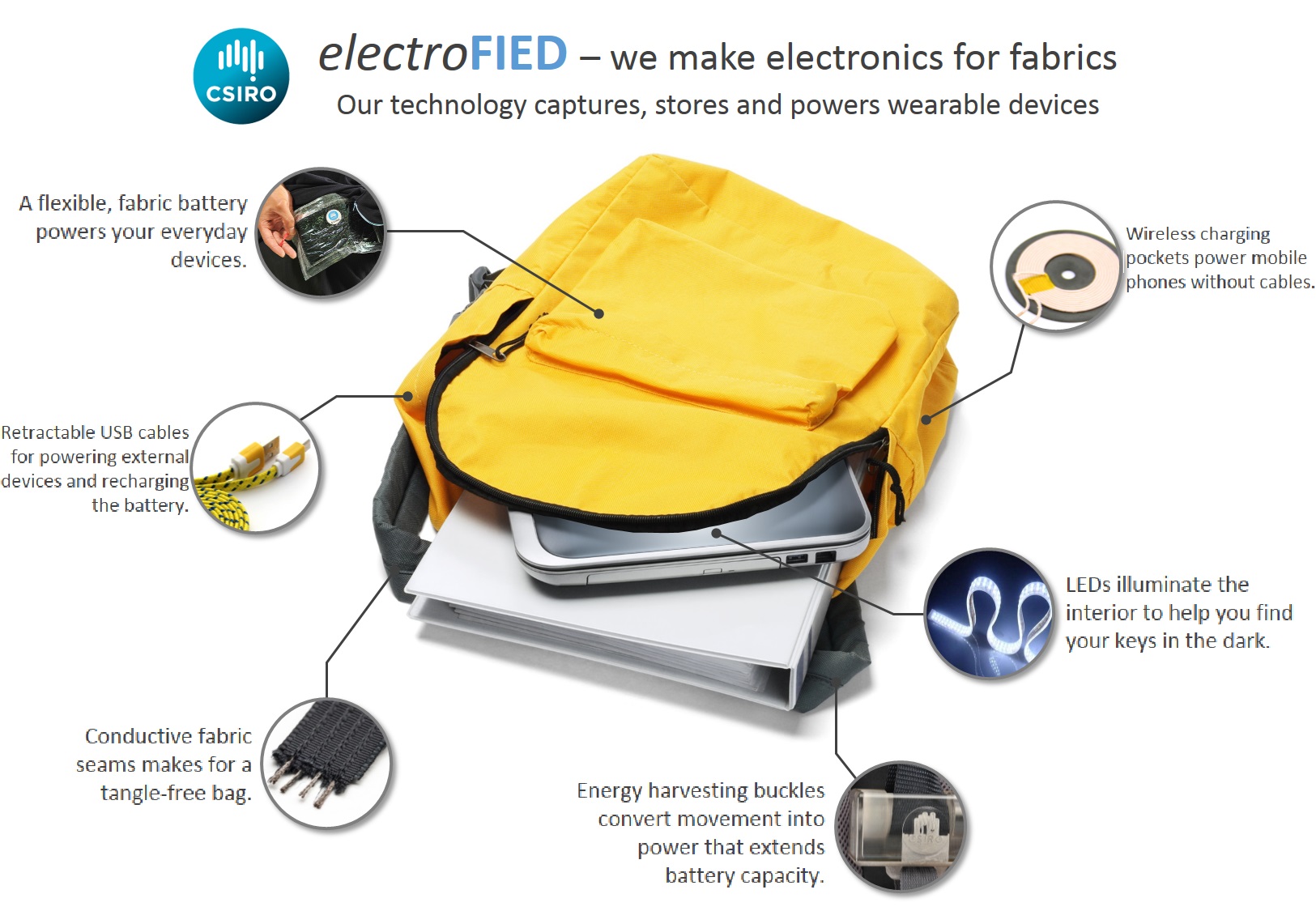electroFIED – a bag of tricks.
What do the new Apple Watch, a blood glucose meter, a smartphone and a tablet computer have in common? They’re all rigid quadrilateral polyhedrons: rectangles that don’t bend.
Screens can be flexible. Printed flexible circuit boards are out there. So why are all our personal electronics rigid rectangles?
The answer is the size and shape of the battery that powers them. In some devices, like your smartphone, the battery can take up more than half of the total size and you’ll still find yourself recharging it every night.
What if batteries were flexible? What could a smartwatch do if it were liberated from its battery? What would it look like?

What’s the big deal y’all. With our flexible technology we’ll be able to weave a watch into your shirt cuff. Photo: Ryan Ozawa/Flickr.
Our Advanced Energy Storage team has invented a flexible battery, and it got them dreaming about the future of wearable electronics. What if our flexible battery could recharge itself? What if we didn’t need any wires to connect devices to it? Could we make personal electronics that are truly wearable?
Could we make a seamless heart rate monitor that’s part of running clothes, or a smartphone that wraps around your wrist, a dress that sparkles with lights like it’s been embroidered with thousands of little diamonds, a back pack that powers a GPS and other equipment for hikers or cross country skiers, or a small bag that powers medical devices?
“Absolutely!” says Adam Best of our Advanced Energy Storage team. “Our wearable energy system is called FIED [Flexible Integrated Energy Device]. It’s made up of three parts. First is an energy harvesting system that harnesses energy from the natural movements of the wearer. Second is a flexible battery that stores the energy until it’s needed. Third is a washable fabric woven from conductive fibres that doubles as cabling to connect your electronic devices.
“We think we’ve solved four problems to do with wearable electronics. Batteries are rigid. Ours is flexible. Batteries go flat. FIED is like a supercharged Energizer bunny. Energy harvesters can be heavy and hard to wear. Ours is barely there. And wires? We’ve got rid of them. The only visible feature that will distinguish our clothes or bags from the rest of your wardrobe is a number of small outlets in which to plug electronic devices.
“We think the battery is the best bit. It’s bendable and flexible. It can liberate a device from its electronics, letting it take on a size and shape that truly fits its purpose.
“When people think of wearable electronics, they think of things like the Apple Watch and Fitbits. A flexible battery could certainly improve the design and functionality of these kinds of devices. But they aren’t truly wearable in the way we think of it. We’re dreaming of a seamless user experience.”
CSIRO is looking for partners to collaborate with us to realise the dream of wearable electronics.
Contact Adam Best: adam.best@csiro.au or 03 9545 8660.



22nd June 2015 at 12:11 pm
what applications for pedestrian, cyclist and runner clothing to prevent accidents??
8th May 2015 at 3:06 am
Love the news about the improving flex battery solutions… and here, I thought the resurrection of Dick Tracy’s wrist device was just the brainchild of the marketing department.
5th May 2015 at 11:29 am
Recharging a watch band, rather than the watch, sounds like an easy solution.
29th April 2015 at 12:11 pm
This is a highly innovative idea as this can lead to more bigger and better things to come will email you Adam.